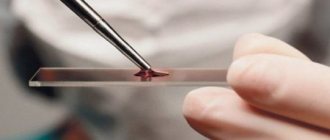Home / Other
Back
Published: 09/18/2020
Reading time: 19 min
0
5
- What is daily diuresis
- What does urine consist of?
- General requirements for urine collection
- General analysis
- What is detected Protein
- Sugar
- Hormones
- Salts
- Creatinine and urea
What is daily diuresis
Daily diuresis in adults and children is the volume of urine excreted per day. This indicator reflects the functioning of the kidneys and provides indirect information about the condition of the heart, liver, and endocrine system. The rates of fluctuations in diuresis in adults depend on:
- amount of liquid drunk;
- nature of nutrition;
- ambient temperature.
The definition of urinary output also includes the number of urinations during the day and at night. When examining urine, its density is determined, which indicates the capacity of the kidneys. A type of study is the Zimnitsky analysis, hourly diuresis.
General rules for donating urine
For the study, morning urine is collected, which has accumulated in the bladder during the night. Such liquid provides more complete information about the state of the body.
When it was not possible to collect morning urine, you are allowed not to urinate for 2-3 hours and then go to the jar for analysis. But the collection time should be in the first half of the day.
Often patients who have not taken a test after sleep are interested in whether it is necessary to take the test on an empty stomach or not. Food affects biochemical processes in the body and can cause changes in color and other indicators. To properly donate urine, you must not eat anything before collecting the material. It is advisable not even to drink water.
What does urine consist of?
Urine of a healthy person is a solution consisting of 96-97% ordinary water and 3-4% chemicals:
- creatinine (released from the blood);
- urobilin (it is what gives the yellowish color to urine);
- potassium;
- sodium;
- urea;
- as well as hydrochloride and hippuric acid, etc.
Physical properties of urine
Physicians who work in laboratories and specialize in examining samples of biological material obtained from patients analyze them using a variety of modern and traditional techniques.
The first physical indicator that doctors pay attention to is the color of urine. In addition, doctors record such parameters as the smell of biological material, its transparency, density, presence of sediment, acidity, etc.
The color and transparency of the material is measured by doctors by eye, the density and acidity of the liquid is measured using special test strips. The smell of urine is determined by sniffing.
The standard odor is medium acidic, characteristic, without any admixture of acetone or other aromas unusual for biological fluid removed from the human urinary system.
READ Determination of the norm of red blood cells in urine
The normal color ranges from light straw to light yellow. The urine of sick patients or people taking any medications may appear green, red, brown, or gray.
The density standard is liquid without impurities and sediment. This indicator is measured in generally accepted conventional units.
The standard density of urine of a healthy person ranges from 1003 to 1028 units. Epithelium, mucus, bacteria found in urine indicate various diseases of the body.
The acidity level is neutral (7 pH).
When laboratory technicians record all the parameters described above, they proceed to study biological material using test strips and automatic analyzer units.
Video:
Such studies can reveal the content of various organic substances in the urine.
Biological material obtained from the patient is checked for the following inclusions:
bilirubin;
glucose;
protein (no more than three hundredths of a gram);
acids;
ketone bodies;
urobilinogen (within six to ten micromoles), etc.
As a rule, the first stage of the study is carried out using test strips. If they show the presence of certain inclusions, then the urine is checked again to determine the concentration of detected organic substances.
Of all the listed inclusions, only protein and urobilinogen are present in the urine of a healthy person. Their permissible concentration, which indicates the patient’s health, is indicated in parentheses.
General requirements for urine collection
It is preferable to use the morning portion of urine; If this is not possible, urine collection for research is carried out no earlier than 4 hours after the last urination.
- Urine collection should be carried out before antibiotic treatment.
- The day before, do not consume colored foods (beets, carrots, blueberries, etc.), foods with dyes, including carbonated drinks, store-bought sweets.
- The day before urine collection, do not take medications (as agreed with your doctor).
- For 2-3 days, eliminate spicy, salty foods, and do not drink alcohol.
- On the day of urine collection, do not take diuretics.
- Women should not collect urine after cystoscopy, during menstruation and for 5–7 days (only in case of urgent clinical need, notifying the doctor).
Indications for use
Daily urine collection for detailed analysis is performed only if there are certain indications. There are not many of them, and they are all aimed at establishing the causes of the patient’s illness. In other words, such studies of biological fluid are necessary only in extreme cases.
Thus, a biochemical analysis of daily urine is prescribed in the following cases:
- The patient is suspected of having type 1 (insulin-dependent) or type 2 (non-insulin-dependent) diabetes mellitus. A 24-hour urine test for sugar is carried out if there are complaints of constant dry mouth, strong appetite, excessive sweating, vertigo, or attacks of faintness. All these symptoms may indicate diabetes mellitus, so the patient should urgently contact a physician or endocrinologist to get a referral for tests. In such a situation, a clinical analysis of 24-hour urine for sugar content is one of the most important diagnostic procedures.
- Suspicion of the formation of a malignant neoplasm in the kidneys.
- Itsenko-Cushing syndrome, in which a 24-hour urine test for cortisol is performed.
A 24-hour urine test for metanephrines is prescribed in the presence of metabolic disorders. In particular, neuroblastoma or pheochromocytoma may be indications for its implementation. Less commonly, urine is tested for metanephrines in cases of frequent attacks of arterial hypertension.
Preparation and collection of urine per day
Preparation for analysis consists of:
- Compliance with personal hygiene rules. This will prevent sweat or other elements from getting into the material. Do not use antibacterial soap or other hygiene products. This impurity can get into the urine and the urine result will be unreliable.
- The day before urine collection, it is not recommended to eat beets, carrots and other vegetables, which are natural dyes. Urine may change color.
- The day before you should not drink alcohol, even in small quantities. Spicy, salty and fatty foods should be excluded from the diet.
- In addition, to obtain reliable results, you cannot take medications: antibiotics, uroseptics, etc.
- Drinking liquids is allowed, but only water without gases.
- It is advisable for women during menstruation to take tests after they have ended, since there is a high probability of blood getting into the urine. If a woman has thrush or other diseases of the genital organs, then before collecting urine you need to use a tampon.
- amyloidosis (protein metabolism disorder);
- diabetes mellitus;
- nephropathy, which manifests itself as swelling of the legs;
- cardiac ischemia;
- renal failure.
https://youtube.com/watch?v=HHp5tgVL9rY
In addition, it is prescribed when the patient is taking certain medications: aminoglycosides, ACE inhibitors, thiazide diuretics and some other drugs.
General analysis
Before collecting urine, thoroughly clean the external genitalia. Women should not collect material during menstruation.
- On the eve of the study, do not eat vegetables and fruits that can change the color of urine (beets, carrots, blueberries, etc.).
- If possible, do not take a number of medications (diuretics, B vitamins, furagin, aspirin, etc.).
Attention: Urine collection is carried out only in a sterile container! It is not allowed to collect urine in containers not intended for laboratory research.
According to Nechiporenko
The first morning urine (middle portion) is collected for analysis. Before collecting urine, thoroughly clean the external genitalia. Women should not collect material during menstruation.
- On the eve of the study, do not eat vegetables and fruits that can change the color of urine (beets, carrots, blueberries, etc.).
- If possible, do not take a number of medications (diuretics, B vitamins, furagin, aspirin, etc.).
Collection rules
- Write your data on the label of the urine collection container: full name, date of birth, date and time of collection of biomaterial, the entry must be made in legible handwriting.
- Start urinating and, without interrupting the process, collect an average portion of urine into a container.
- Take the sample into a vacuum tube.
Attention: Urine collection is carried out only in a sterile container! It is not allowed to collect urine in containers not intended for laboratory research.
Daily urine
Urine collection is carried out for 24 hours in compliance with the usual drinking regime - 1.5–2 liters per day.
Collection rules
- In the morning, between 6:00 and 8:00, empty your bladder (pour this portion of urine into the toilet).
- During the day, collect all urine in a special container with a volume of at least 2 liters.
- Collect the last portion at exactly the same time when collection began the day before (mark the start and end times of collection).
- At the end of the daily urine collection, mix the sample thoroughly, smoothly turning the tightly closed container 15–30 times.
- Measure and record your 24-hour urine volume (urine output).
- Using a sample transfer device from a container, collect urine into a vacuum tube.
- Label the test tube (sample number in accordance with the referral form) and submit it to the laboratory indicating the total volume of urine excreted per day.
Attention. Store urine in the refrigerator during the entire collection period.
If the analysis requires collecting urine within 10–12 hours, collection is usually carried out at night:
- Before going to bed, empty your bladder and mark the time (discard this portion of urine).
- Then urinate 10–12 hours later into a special container and deliver this portion of urine to the laboratory for research.
If you cannot hold urination for 10–12 hours, urinate into a container in several steps and note the time of your last urination.
If it is necessary to collect urine 2 or 3 hours in advance:
- Empty your bladder (throw away this portion), mark the time and exactly after 2 or 3 hours, collect urine for examination.
Before collecting 24-hour urine to determine the concentration of hormones (steroid profile), for 3 days before collecting urine, you should not use drugs containing rauwolfia, theophylline, nitroglycerin, caffeine, ethanol, chlorpromazine, contrast dyes, hydroxymethoxyphenylglycol, imipramine, phenacetin, propranolol. It is also prohibited to consume foods containing serotonin (chocolate, cheeses, bananas), and not to drink alcohol. Avoid physical activity, eliminate stress, do not smoke.
Daily urine for testing for catecholamines, metanephrines, catecholamine metabolites, C-peptide, insulin, histamine, and steroid profile can be stored at a temperature of 2–8 °C for no more than 24 hours. For longer shelf life, freeze. Can be stored frozen for up to 1 month. Delivery frozen. Do not defrost.
Daily urine for cortisol and adrenaline can be stored at a temperature of 2–8 °C for up to 14 days.
According to Zimnitsky
Urine collection for analysis according to Zimnitsky is carried out over one day at a certain time. For the study, you will need to prepare 8 special containers for collecting the secreted fluid (they can be purchased at the pharmacy), a watch equipped with an alarm clock, and a notebook for recording all the fluid consumed per day.
Attention! It should be remembered that the concept of “all liquid” means not only the water, tea, compote you drink, but also that which comes with first courses, fruits, milk, etc.
The purchased containers must be numbered 1, 2, 3 and so on, which will correspond to No. 1 - 9.00 o'clock, No. 2 - 12 o'clock, that is, each interval lasting 3 hours. If the volume of urine is too large, you should also have a couple of additional containers, which also need to be signed “In addition to portion No...”, and indicate the container number.
At 6 o’clock in the morning, the subject must empty his bladder into the toilet - this portion should not be included in the donated biomaterial. In the future, you should urinate every 3 hours in pre-prepared containers. You should also adhere to the time of expected bladder emptying - 9.00, 12.00, 15.00, 18.00, 21.00, 24.00, 03.00, 06.00.
If it is difficult to adhere to the specified hours, then you need to collect urine in an appropriate container at three-hour intervals, for example, from 6.00 to 9.00, etc. In this case, you will need to wake up to urinate at 24:00, 3:00 and 6:00 o’clock in order to collect biomaterial in the last containers (No. 6, 7, respectively), and for this it is better to use an alarm clock so as not to miss the allotted time.
In this case, you will need to wake up to urinate at 24:00, 3:00 and 6:00 o’clock in order to collect biomaterial in the last containers (No. 6, 7, respectively), and for this it is better to use an alarm clock so as not to miss the allotted time.
Containers filled with secreted liquid should be stored in the refrigerator, closed, without freezing. In the morning, upon completion of collection procedures, all containers must be transported to the laboratory. If there is no urination at any time, then an empty marked container must also be delivered along with the rest.
In the referral, the patient will need to indicate the volume of fluid drunk and excreted per day. A urine test according to Zimnitsky is prescribed if the development of renal failure is suspected. This study allows you to evaluate the ability of the kidneys to control the concentration of excreted fluid throughout the day.
For the reliability of the analysis, it is not necessary to toilet the genitals before each urination. A woman should know that this study is not carried out during menstruation.
What is revealed
The collection of all urine that accumulates in the body and is excreted throughout the day is prescribed for diseases of the kidneys, endocrine and cardiovascular systems, and for symptoms of diabetes.
Human urine is the result of blood filtration in the parenchyma (top layer) of the kidneys. It is 99% water. The remaining substances appear from the processing of food and liquid; nitrogenous breakdown products of proteins (uric acids, creatinine, etc.) and salts are normally present.
In addition to food, diuresis is influenced by many non-obvious factors, for example, temperature and humidity, physical activity, weight and age. The amount of urine per day normally ranges from 1000 to 2000 ml. in adults and makes up about 75-80% of the liquid drunk.
Pathological changes in the body are reflected in the composition of urine and are characterized by the presence of certain components. We'll talk about them further.
Protein
Most often, abnormalities in kidney function are expressed in the form of proteinuria. This is a condition in which excess protein is present in the urine, i.e. immunoglobulin and albumin exceed 150 mg. per day.
Normally, a small amount of protein not processed by the kidneys may be present in the urine, but in such a small titer that the general analysis does not take it into account. In cases where protein is detected in it, a clarifying daily fee is prescribed.
Visually, the presence of protein can be suspected by seeing suspension, flakes or opaque foam in the urine. The more inclusions, the more dangerous the patient’s condition. If proteinuria is from 1.5 to 2 g per day, then the reasons may be natural: excess heavy food, intense physical or emotional stress, hypothermia.
With food allergies, immunoglobulin levels are elevated. To clarify allergens and exclude them from the diet, you need to do a hemotest and follow the doctor’s recommendations.
If the protein analysis showed a value above 4 g per day, then this indicates dangerous disorders in the functioning of the kidneys, cardiovascular diseases or cancer. Their symptoms vary, but are often accompanied by fever, pain, and nausea.
Sugar
By analogy with excess protein, the presence of sugar in the urine is called glucosuria. It occurs when the level of this substance in the blood rises to such an extent that the kidneys cannot filter it and “leave” it into the urine.
Most often this occurs due to the development of type 1 and type 2 diabetes. In addition to excess glucose, ketone bodies (acetone) also appear in the urine. Causes may also include kidney failure, thyroid disease and serious stress.
A urine test for sugar is prescribed for appropriate symptoms: thirst and frequent urge to urinate, sudden weight gain or loss, non-healing scratches and deterioration of the skin and hair.
Amount of urine
Daily amount of urine. A healthy person excretes approximately 1500 ml of urine per day. However, this amount can vary over a fairly wide range, amounting to approximately 3/4 of the total amount of liquid drunk during the day. The morning portion of urine is 150-200 ml. An increase or decrease in daily urine volume is an important clinical indicator.
Polyuria - an increase (over 2000 ml) in the daily amount of urine under physiological conditions is observed in the third trimester of pregnancy, after the end of menstruation, with insufficiency of protein foods. Polyuria is observed in some kidney diseases, diabetes mellitus, epilepsy, hysteria, heart disease during the period of swelling, nutritional dystrophy, and is especially pronounced in patients with diabetes insipidus (4-6 liters or more per day). Polyuria should be distinguished from frequent urination, which is caused by other causes, such as inflammation of the bladder.
Oliguria is a decrease in the daily amount of urine (less than 500-300 ml). In healthy people, oliguria can occur with limited drinking, increased sweating, physical activity, work in hot shops, etc. Oliguria is observed in kidney diseases such as glomerulonephritis, chronic renal failure, pyelonephritis, nephrotic syndrome, etc. The cause of decreased urine output can also be systemic lupus erythematosus, disseminated intravascular coagulation syndrome, infectious diseases (cholera, dysentery, typhoid fever, malaria), severe injuries, the effects of medications, poisoning with lead, sublimate, arsenic, turpentine.
Anuria is a complete cessation of urination. This is a very serious symptom, the cause of which can be severe kidney damage (acute nephritis, transfusion of incompatible blood, acute renal failure), abdominal trauma, acute peritonitis, renal colic, ureteral catheterization, shock. In a number of diseases, only a delay occurs, and not a complete cessation of urination.
Ischuria is urinary retention in the bladder as a result of impaired spontaneous urination. The cause of ischuria can be lesions of the prostate gland in men (inflammation, adenoma, cancer), stricture (narrowing) of the urethra, impaired contractile function of the bladder.
During the day, most of the urine is excreted during the daytime - 75-80% of the total amount. An increase in the volume of the night portion is a symptom that occurs with certain kidney diseases, prostate hypertrophy, and diabetes insipidus. The predominance of nocturnal diuresis is called nocturia.
B.M. Lifshits, V.I. Sidelnikova
How to collect a daily urine test?
To collect daily analysis, special containers with a tight-fitting lid are used. The container should be kept in a cool place until it is sent to the laboratory. You should collect all the urine, preferably starting in the morning, but you can do this at any time of the day, the main thing is that after that all the urine is collected in a container during the day. There is no need to save the first morning urine.
During the collection of the analysis, it is advisable to be at home in order to collect all the urine completely. Otherwise, this may distort the analysis picture. As you can see, there is nothing complicated about how to collect a daily urine test; this analysis does not require special preparation.
How to collect urine during the day
As with the collection of biological fluid for general analysis, there are also clear requirements for daily urine testing, failure to comply with which will lead to inaccurate final data and, accordingly, to an incorrect diagnosis.
That is why, on the eve of collecting urine, a woman needs to:
- prepare a container for the biomaterial - this can be a special container purchased at a pharmacy, or an ordinary large glass container that needs to be thoroughly disinfected;
- exclude salty, spicy and smoked foods from the diet, as well as foods that can affect the color of urine (carrots, rhubarb, cherries, beets).
It is better to collect biological fluid in a plastic container; you can purchase it at a pharmacy chain or medical equipment store.
Special kits are available for sale, they include a container with symbols in liters, a container for urination and transferring biological fluid to a larger container, a urine stabilizer (20 % hydrochloric acid solution) and a plastic cup for collecting biomaterial from a large container.
To correctly pass a 24-hour urine test, a pregnant woman needs:
- Release the first portion of urine in the morning into the toilet, but be sure to record the exact time of urination.
- Before each urination, perform thorough hygiene of the external genitalia.
- After each emptying of the bladder, add the resulting biological fluid to a prepared large container.
- Record the entire volume of liquid consumed within 24 hours (including first courses, juices, tea).
- Store biomaterial in a cool, dark place (temperature should not exceed +8 degrees).
- The last collection of urine should occur after the first one was missed, for example - if urination began at 7.00, and this portion was not placed in the container, the collection procedure must be completed at 7.00 of the next day.
- It is necessary to donate the collected biological fluid as soon as possible after the last emptying of the bladder, otherwise the test results may be inaccurate.
Depending on the type of research, either a large container is delivered to the laboratory center, or the required amount is poured into a smaller container - this must be agreed upon with the laboratory assistants.
And now we want to sequentially consider the studies that are carried out from 24-hour urine.
Interpretation of urine test results for daily diuresis
When determining the norm of diuresis, the following criteria are taken into account:
- the total volume of daily urine is 1-1.5 liters;
- the amount of urine excreted is ¾ of the liquid drunk;
- predominance of daytime urination over nighttime urination.
Increased amount of urine - polyuria. Decreased - oliguria or anuria. The predominance of nocturnal diuresis is nocturia.
Additionally, the density of urine is determined; it should be 1010-1012. If this number is higher, the urine density is low. If the number is lower, the urine density is high. This indicates a violation of the concentration function of the kidneys.
False specific gravity and acidity results
To avoid false estimates of the physical and chemical properties of micha, you need to know how to collect it for general analysis. Cloudy and opaque material is a consequence of prolonged standing urine, as bacteria begin to multiply in it. This cannot be allowed, because similar transparency is an indicator of the presence of blood elements, epithelium or pus in various pathologies.
For a general urine test, the test material will not be suitable if the patient has been administered the following drugs:
- mannitol;
- X-ray contrast agents;
- dextran;
- glucose.
These drugs affect the density, increasing the specific gravity of urine (hypersthenuria). Taking diuretics, on the contrary, reduces concentration, causing changes in normal values.
An important criterion for analysis is pH, which varies depending on various factors. A false alkaline reaction is obtained if the patient ate exclusively vegetarian or dairy foods the day before. The predominance of meat products in the diet before the study may show an acidic reaction. Reasons for changes in pH are also:
- fruit and vegetable diet;
- prolonged vomiting or diarrhea the day before;
- taking Adrenaline, vitamin C, Methionine, Nicotinamide;
- starvation;
- eating cranberries;
- protein diet.
Therefore, before collecting urine tests, you need to switch to a balanced diet and consult a doctor about stopping medications while collecting the material.
Table of urinary excretion indicators for men and women
For daily diuresis, the norms fluctuate slightly. In adult men and women the rate is almost the same; in children it varies by age.
| Age | Urine, ml |
| 1-10 days | 100 |
| Up to 2 months | 400 |
| Up to a year | 500 |
| Up to 3 years | 600 |
| Up to 5 years | 700 |
| Up to 8 years | 600-800 |
| Up to 14 years old | 800-1200 |
| Adult men | 1000-1800 |
| Adult women | 1000-1500 |
| After 60 years | 1500-2000 |
Hourly diuresis varies depending on physical activity and diet. Until 3-4 o'clock in the afternoon it is higher than in the evening.
Reasons for changes in color index
In good health, urine in adults has a yellow tint, which is caused by the pigment urochrome. If the coloring is excessively intense, they speak of dehydration as a result of vomiting, diarrhea or swelling. Dark uremia may be a consequence of cardiovascular failure.
Pale and almost colorless urine occurs when taking diuretics. Sometimes when urinating, the patient notices a bright yellow-orange hue in the urine. The reason for this color may be the intake of B vitamins, Furagin, Furadonin, Rifampicin. Therefore, in order to avoid false color indicators, sometimes doctors recommend discontinuing coloring preparations if this does not affect the human treatment process.
Some patients eat intensely colored fruits and vegetables before collecting a general urine test. These are carrots, beets, and blueberries. The drug Aspirin or its analog Antipirin has a similar coloring effect. To avoid unusual color intensity (usually pink) when taking a general urine test, the doctor should tell his patient how to collect it and what not to eat.
Before collecting urine for analysis, you should not take medications whose active ingredient is bearberry. You also need to know that Metronidazole and sulfonamides give urine a red-brown color. This complicates diagnosis with pathologies such as phenol poisoning or anemia, in which blood cells are destroyed. Therefore, patients should not only learn how to collect urine for general analysis, but also warn the doctor about taking these medications.
Symptoms of increased daily diuresis
Diuresis normally ranges from 1 to 1.5 liters per day, depending on the characteristics of the body. An increase or change in it indicates ongoing pathological processes. There are the following types of disturbances in daily diuresis in adults:
- polyuria - the volume of urine excreted is more than two liters;
- oliguria - the volume of urine excreted is less than 500 ml;
- nocturia - most of the urine is released at night;
- anuria - a person excretes less than 50 ml of urine per day.
An increase in daily urination is accompanied by frequent urination and a large volume of urine per urination. Depending on the underlying disease, a person feels pain in the lumbar region, thirst, and dry mouth.
Oliguria is characterized by infrequent urination with a small amount of urine. Abdominal and back pain, swelling, nausea, and headaches are observed.
Anuria is a serious condition that is accompanied by the accumulation of toxins in the blood, leading to the development of coma.
What should you not eat before the test in certain cases?
The list of products that are prohibited for consumption is determined in each specific case.
Examination according to Nechiporenko
The Nechiporenko study is carried out only on an empty stomach. That is why patients are prohibited from eating 6-8 hours before the examination. The exception in this case is patients who, due to their health, are prohibited from refusing food for a long time. This fact must be reported to the laboratory assistant. The person must provide a list of foods that he consumed the day before.
Zimnitsky test
Submission of biomaterial for the Zimnitsky test is not carried out on an empty stomach. That is why a person must eat first. In this case, it is not recommended to violate the usual drinking and nutrition regimen.
Biochemical examination
Biochemical diagnostics requires exclusion from the diet the day before of plant foods that contain ascorbic acid in large quantities.
Patients should avoid sea buckthorn and rose hips. Consumption of black currants and bell peppers is also prohibited.
Examination for the amount of adrenaline and norepinephrine
A few days before the planned examination, patients are prohibited from eating dishes prepared with vanilla. You should not consume drinks that contain caffeine.
Patients should try to limit their intake of licorice-based medications. It is not recommended to eat hard and soft cheeses before the test. Doctors advise avoiding foods such as walnuts and bananas. It is not recommended to consume horse chestnuts and other products that contain amines.
Testing for sugar levels
If diagnostics are carried out on the amount of sugar, then you need to give up foods that are saturated with carbohydrates. Consumption of baked goods and sweets can lead to an increase in the amount of glucose in the body.
Reasons for increased daily diuresis
Fluctuations in urinary output are not an independent disease. This is a symptom that is observed in diseases of the kidneys, liver, heart, diabetes and some infections.
Polyuria is observed with:
- reduction of edema;
- diabetes mellitus or diabetes insipidus;
- in the second period of hemorrhagic fever with renal syndrome.
Physiological polyuria is observed with excessive fluid intake and diuretic medications. For pregnant women, slight polyuria is normal.
Oliguria and anuria occur with blood loss, vomiting, acute kidney inflammation, and renal failure.
Daytime diuresis should prevail over nighttime. If there is an inverse ratio, this indicates kidney damage.
General urine test for diabetes: how to collect, norm and interpretation
When diagnosing or analyzing the level of compensation or decompensation for diabetes mellitus and its early or late complications, not only a blood test is performed, but also a urine test for sugar and acetone.
As a rule, such tests have to be taken at various stages of the disease, and not just at diagnosis.
Some diabetics use a urine test for self-monitoring, where a single sample is taken and the sugar level is detected using test strips. However, it cannot be called accurate. Why? We will definitely tell you about this, but a little later.
Types of urine tests for diabetes
Diabetics have to undergo several types of tests:
- General or general clinical
- Biochemical
- Urinalysis according to Nechiporenko (for determining microalbuminuria)
- according to Zemnitsky
- analysis for the content of ketone bodies and glucose in daily urine, etc.
General urine analysis (UAM) indications
It is prescribed not only to diabetics, but also to a number of patients who went to the hospital for one reason or another (for example, when undergoing a medical and social examination). It is needed in order to conduct an external examination of the sample itself, as well as assess the condition of the urinary system, predict the course of the disease, monitor possible complications of diabetes, etc.
It is enough for healthy people to undergo such an examination no more than once every 1-2 years or before some important events in life: the first trip to kindergarten, school, college, when obtaining a license, when hiring or undergoing a medical and social examination ( ITU), etc.
Features of daily collection during pregnancy
During the period of bearing a child, monitoring of tests is carried out especially carefully, since many indicators indicate the condition of the fetus.
The same basic substances that are tested outside of pregnancy are assessed: protein, sugar, hormones and salts. A slight increase in sugar and protein is possible, especially in the later stages, since the uterus and fetus put pressure on the surrounding organs and create microtraumas.
But significant deviations from the correct indicators may indicate the development of diabetes, renal failure or gestosis. Under no circumstances should they be ignored. Even during this period, a daily analysis is prescribed to ensure good fluid removal and the absence of internal edema; this is done during a large weight gain.
When the goal is to control diuresis in general, then you need to not only collect all urine, but also record the exact amount of water and other drinks consumed. About 20% of the fluid is converted into sweat, and the rest must leave the body as urine.
In addition, pregnant women are prescribed a Zimnitsky test. This is also a daily urine collection, but it is done not in one container, but in eight. From 9 am until the same time the next day, every 3 hours you need to urinate into a new container, label it and place it in a cool place. All jars of urine must be submitted to the laboratory.
This analysis is prescribed for suspected renal dysfunction, as well as for diseases that affect the condition of the parenchyma.
Indicators for decoding a complete urine test
In the process, the following are examined: the degree of transparency, how thick the color is, specific gravity, acidity coefficient. The content of the following elements is also determined:
- hemoglobin;
- squirrel;
- bile pigments;
- glucose;
- ketone bodies;
- inorganic substances;
- epithelial cells (which can be in the urinary ducts) and blood (erythrocytes, leukocytes and others).
All of the listed signs and elements, their norm or deviation from the norm, confirm or refute any pathology. In order for the results to be reliable and not distorted, on the eve of the test you should not take anything that you cannot eat before giving your urine.
Analysis in children
Almost all the indicators in this study in children differ significantly from those in adults. You cannot draw conclusions about the results based on stable standards; they directly depend on the exact age of the child and are constantly changing. Thus, to calculate diuresis, a special formula is used: 24-hour diuresis (in milliliters) = 600 ml + 100 ml * (n-1), where n is the child’s age.
The amount of residual protein is normally less than in adults (0.03 g/l), but sugar may be slightly higher. The presence of salts does not indicate a violation of their metabolism; oxalates most often end up in the urine due to acidic and protein foods, but phosphates can be a sign of cystitis or pyelonephritis.
The final assessment of the test results in children is made by the pediatrician, taking into account the general condition of the patient, blood biochemistry, ultrasound and other necessary categories.
Collecting a urine test for small children is more difficult than for adults: you need to carefully ensure that absolutely all the urine gets into the container, you absolutely cannot pour it from the pot, wring out the diaper, etc. Infants can have a urinal attached to it, but you cannot leave it in place for longer than an hour to prevent diaper rash.
To monitor general diuresis in newborns, not measuring the amount of urine, but counting the frequency of urination is used.
A urine test can provide a lot of important information, provided that its algorithm is followed. You must approach the process responsibly and adhere to temperature, hygiene and other standards described above, then the study will be a good tool for monitoring your health.
Products
What you should not eat before donating urine are salty foods. They increase the amount of salts in the kidneys. If salty, spicy and fatty foods were consumed on the eve of urine testing, then diagnostics may show the presence of sand in the urine.
On the eve of the study, all kinds of diets are prohibited. Nutrition should be complete and varied. If the dishes you eat contain a large amount of protein and exclude carbohydrates and fats, this may affect the analysis. In such a situation, the doctor may detect elevated phosphate salts, which indicate diabetes or musculoskeletal diseases. This indicator is especially significant when diagnosing a child’s urine.
You should not eat more sweets before a urine test. This includes not only chocolate, but also baked goods. Any foods or dishes that increase the amount of glucose in the body can cause a false test. In this circumstance, the diagnosis is usually repeated, but the result still makes the patient worry about possible problems with the absorption of sugar.
In addition to avoiding prohibited foods, smoking is not recommended before collecting biological fluid. Nicotine affects kidney function and may distort test results.
Vegetables
Before taking a urine test, you should not eat vegetables that can affect the color of your urine. Also, some plant foods distort acidity. Vegetables can affect the smell and change the concentration of biological fluid. It would seem that such products are useful. But before the study, their number should be moderate.
Carrots and beets are natural dyes. Even with minor consumption of these products, the color of urine changes. Therefore, you should refuse not only freshly squeezed beet or carrot juice, but also raw vegetables. Tomatoes will increase your protein levels.
Borscht made with vegetables also causes urine to turn pink-orange.
Brussels sprouts, broccoli, kohlrabi, and celery can increase uric acid levels. Strong vegetables, such as green and onions, horseradish, and garlic, can affect the smell of urine. If permitted food is seasoned with similar ingredients, this will certainly affect the indicators and make one suspect an inflammatory process in the urinary tract.
Fruits
- Coloring fruits should not be consumed before the test. These include grapes, strawberries, black and red currants, and mulberries. If urine stains dark or red, a pathological process in the kidneys or ureters will be assumed.
- Watermelon should be limited or avoided for 2-3 days. The fact is that it is a diuretic product. Excessive consumption of watermelon increases the amount of sodium and decreases the concentration of urine.
- Grapes and raisins should be consumed in minimal quantities to improve urine analysis. These fruits can increase the amount of protein excreted by the kidneys.
- Sweet fruits - strawberries, apricots, peaches, bananas - will provoke a false positive result for elevated glucose levels.
Why is daily urine collected?
Collecting daily urine for analysis is required so that your attending physician can assess the ratio of the above elements, or diagnose pathology (deficiency or surplus of an element or group of substances).
The complex of studies carried out in laboratory conditions allows us to qualitatively evaluate not only the chemical characteristics of urine, but also indicators of the microbiological and biochemical state.
Are there any special restrictions during pregnancy?
After registration, pregnant women are advised to regularly test urine. This makes it possible to assess the condition of her body and the development of the baby. Before conducting the study, it is strictly forbidden to take food products whose action is aimed at changing the smell or color of the biomaterial. Patients are not recommended to take multivitamins the day before the examination.
There are no special restrictions for pregnant women, but they must adhere to the general rules for collecting material. Before the procedure, patients are recommended to carry out hygiene procedures using a weak soap solution.
This will eliminate mucus and leukocytes from the biomaterial. Urine collection for general analysis is carried out in the morning. In order to conduct a full laboratory examination, a woman needs to provide 100 milliliters of urine.
Indicators worth paying attention to
Most often, a daily urine test is performed for protein, sugar, salts or cortisol, because their presence indicates serious problems with the kidneys:
- the presence of proteins in tests indicates the possible presence of diseases such as diabetes, kidney failure, bladder disease or nephropathy. The normal amount of protein is 0.08 – 0.24 g per day;
- A daily urine test for salts is prescribed by the treating specialist if there is a suspicion of the presence of diseases such as renal failure, kidney stones, sarcoidosis, cirrhosis of the liver, etc. The urine of a healthy man excreted per day should contain 20-60 mg of salts. For women, the figure is 20-54 mg per day;
- cortisol in daily urine indicates the presence of Cushing's syndrome, Addison's disease, and pituitary dysfunction. Free cortisol can be excreted from the body in urine. Depending on how much cortisol was found in daytime urine, one can judge the total amount of daytime hormone in the body. A urine test for cortisol is done to rule out the above diseases if the patient complains of constant fatigue, upper body obesity, or regular menstrual irregularities. Free cortisol should be released from the blood within 28.5 - 213.7 mcg per 24 hours.
Medicines
It is not recommended to take medications on the eve of submitting your urine for analysis. If a person is undergoing a course of treatment, then the possibility of discontinuing the medications must be discussed with the doctor. Despite the fact that the use of medications affects the results of the study, some of them cannot be canceled for health reasons. In this case, when deciphering the results, the doctor takes into account the fact that the patient took medications.
If it is necessary to determine the content of catecholamines in the body, then it is prohibited to take medications based on caffeine, alcohol tinctures, products with theophylline or nitroglycerin, as well as substances containing rauwolfium. These components provoke an increase in neurotransmitters in urine and cause a sharp jump in adrenaline.
Caffeine-based drugs, as well as diuretics, for example, Furosemide, can distort the result of a general urine test. Diuretic medications increase sodium levels in urine. They also help reduce the amount of fluid in the body tissues. Stimulation of kidney function leads to the fact that the material becomes less concentrated, and the diagnostic result will be erroneous.
Iodine-based medications can stain biological fluid. The drug Faringosept and Lugol provoke the formation of orange and even brown urine, and this gives an erroneous assumption about the blood content in it.
Before taking urine tests to detect protein, you must avoid medications: cephalosporins, penicillins, salicylates. The following may give a false result:
- Amphotericin;
- Griseofulvin;
- Tolbutamide;
- Oxacillin;
- Nafcillin.











